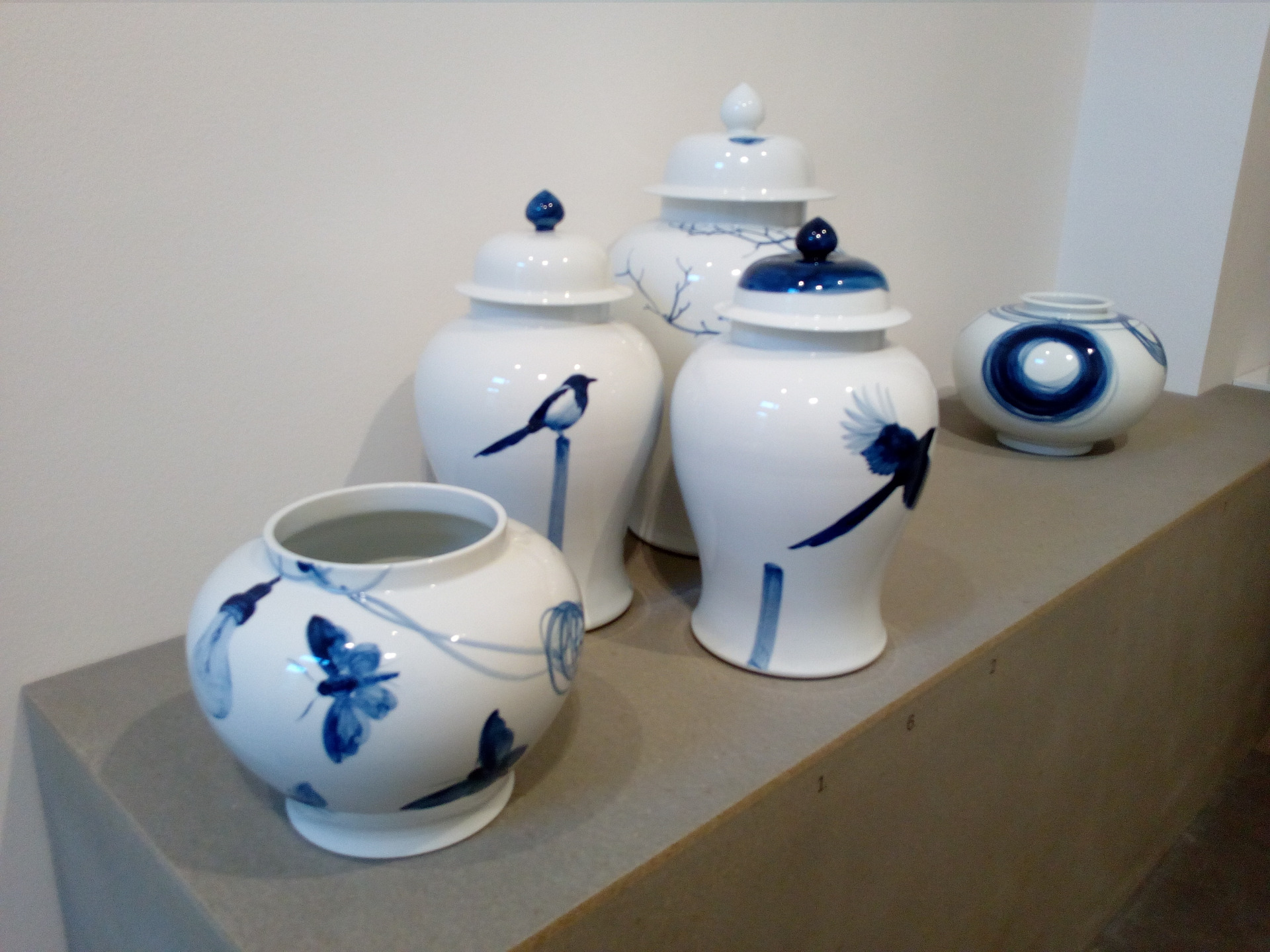Jiří Straka - An old friend Quinghua porcelain
Qinghua Porcelain
I first visited Jingdezhen, the Chinese "porcelain capital", four years ago, when I was painting a collection of twelve large vases specifically using the qinghua technique (cobalt underglaze painting) for Hu Guoyin - a well-known collector of blue and white porcelain - after having been recommended to him by the painter Wu Yi, who is our mutual friend.
I became totally enchanted by this medium and I have returned to Jingdezhen several times since them.
The history of pottery production in the Jingdezhen region dates back
more than two thousand years. The local museum has on display several
specimens made of fine clay and protoporcelain dating back to the period
of the Northern and Southern Dynasties, and the Tang and Song
Dynasties. The blue and white qinghua porcelain started to be produced
here during the late Yuan Dynasty in the fourteenth century, and, during
the subsequent Ming and Qing dynasties, it became a worldwide synonym
for China, its refined culture, and its art.
Specifically, the rich meaning concealed in this seemingly simple medium captivated me and has led me to work on several series of blue and white porcelain pieces for which I use traditional shapes dating back to the Yuan and Ming periods, combining them with unusual decorations. To establish a contrast to the traditional shape of the porcelain, I use decorations that are based on the designs found in old European painting in combination with not only typical Chinese motifs (insects, flowers, fish, etc.) but also motifs found in the everyday reality of Chinese cities today. As compared to traditional decorative techniques, it is not the line that determines the rhythm and composition of the decoration, but rather large spaces combined with subtle shading and wash techniques.
It is not just the fragility and the great historical value of the medium that attracts me to working with porcelain, but also the uncertainty of what the results will be - results that become apparent only after several days, or even weeks, of intense work. The fact is that during the firing process, some pieces crack, or deformations appear; there may be defects in the glaze, undesirable changes in the shades of cobalt, or some other type of irreversible damage. The painter must thus work with a certain sense of helplessness and uncertainty, and the suspense that precedes each opening of the kiln door may even be termed arousing.
Jiří Straka, 2017
Více než sto společných cest Čínou, naše bohatá společenská setkání a přátelství s rozmanitými osobnostmi Říše středu nás s malířem Jiřím Strakou historicky spojují.
Z. S. 2018
Galerie Zdeněk Sklenář - 14.2. - 7.4. 2018
